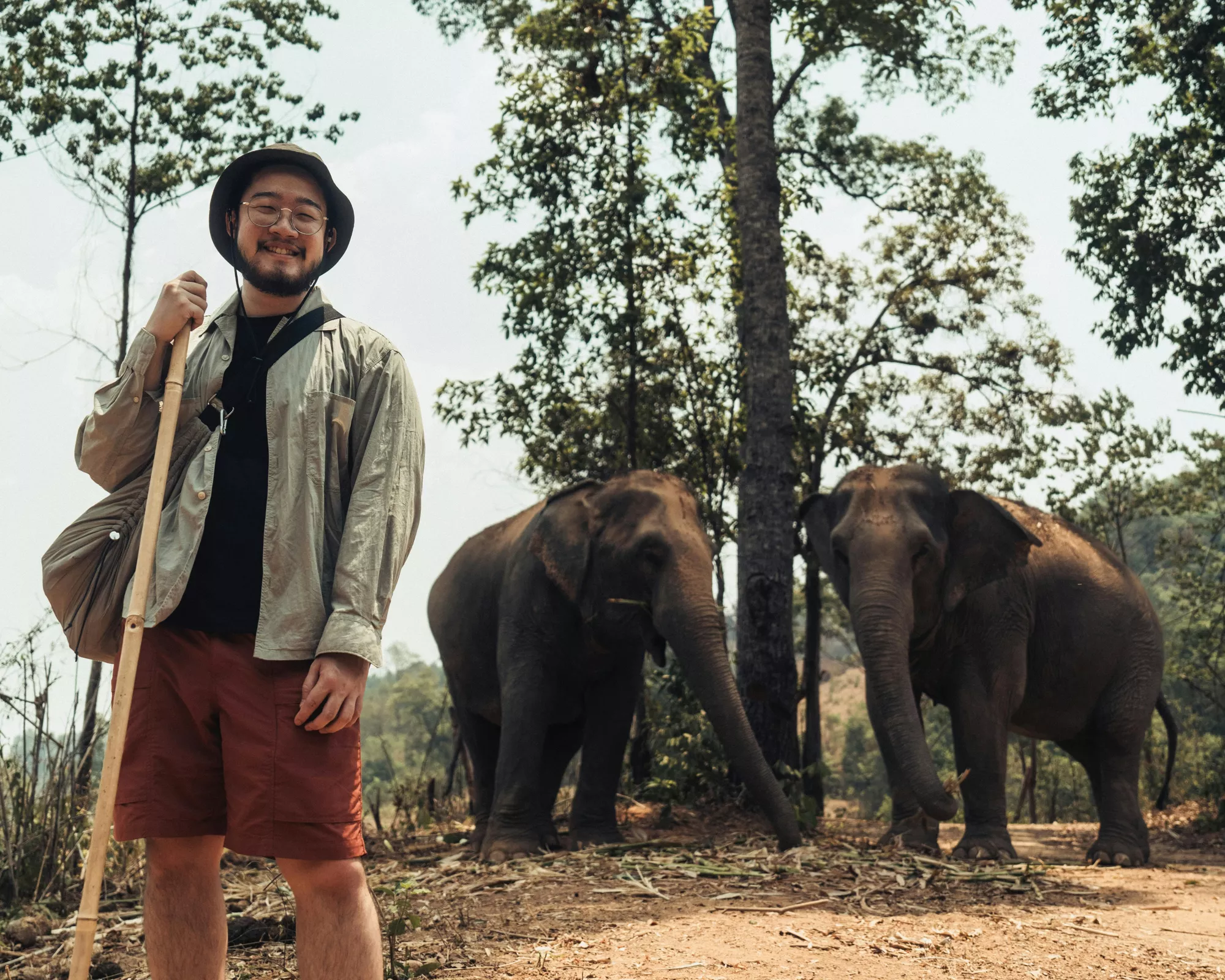How to Visit Elephants Ethically in Thailand: 5 Tips + Where to Go
We should only visit places where you can look and not touch

Thailand is known for its many elephant sanctuaries, and while most have stopped offering elephant riding and now call themselves "ethical elephant sanctuaries”, they often still allow visitors to touch, feed, and bathe the elephants.
According to World Animal Protection, interactions like bathing, direct feeding, and selfies cause just as much suffering as elephant rides. That’s because for elephants to tolerate human-interaction, they have to undergo cruel and inhumane training methods. So as a general rule, we should only visit places where you can look and not touch.
5 things to look out for
No riding or performing tricks
Elephants should not be exploited for human entertainment. Elephant riding or making elephants paint pictures or perform tricks is stressful and unnatural behaviour. Since elephants are wild animals and not domesticated, they would not let humans ride them or perform human tricks by choice.
To make elephants submissive enough for riding, they often undergo a cruel training process known as “the crush”. This involves forcibly separating calves from their mothers and subjecting them to brutal physical and psychological torture until they submit to human control and can be controlled by fear.
No touching or posing for selfies
Although not seemingly as exploitative as riding, elephants posing for selfies means tourists are allowed to get close enough to touch them. This is still considered stressful and unnatural behaviour, as their natural instinct would be to avoid all forms of human contact.
True ethical sanctuaries instead adopt a hands-off approach, where you are allowed to look and observe them from a safe distance.
No direct feeding
Direct feeding can disrupt elephants natural foraging behaviours and social dynamics. It can encourage aggressive behaviour as elephants compete for food, increasing the risk of dangerous situations and injuries.
Popular programs like "breakfast in bed" where elephants hand deliver breakfast to guests’ rooms reinforce this harmful practice.
Instead, a true ethical sanctuary will allow you to observe elephants foraging in their natural environment. They might offer educational programmes where you can learn about elephant nutrition and prepare food and place it out for the elephants as enrichment so that it doesn't involve direct feeding. This approach ensures the well-being of the elephants and promotes a more natural experience for visitors.
No bathing
Tourist bathing experiences can be highly stressful for elephants, especially if it involves a whole heap of people around them, climbing on top of them. Elephant tours that promote bathing often involve multiple groups of tourists giving the elephants mud baths repeatedly, which is unnatural.
No baby elephants
If a sanctuary has baby elephants, it likely means that they are breeding them, unless its an orphanage for young rescued elephants. Captive breeding almost always guarantees that the babies undergo “the crush”. No responsible elephant sanctuary will engage in this horrible act.
Ethical Elephant Sanctuaries in Thailand
Chang Chill, Chiang Mai
There are only a handful of elephant sanctuaries in Chiang Mai that ticks all these boxes. One of them is Chang Chill. It was originally an elephant camp that offered rides, but after discussing a new and ethical tourism model with World Animal Protection, they discontinued riding activities, made changes to infrastructure and practices to establish the Chang Chill of today.
Chang Chill has an amazing full-day programme and it’s located near Chiang Mai city. You’ll go on a short trek into the forest to find the elephants, learn about their past experiences, and see them interact with one another. You'll also be able to prepare food like protein balls and sugar cane for them and place them in no-touch feeding tubes.
Burm & Emily's Elephant Sanctuary (BEES), Chiang Mai
If you have 2 days to spare, we highly recommend visiting BEEs elephant sanctuary for a more immersive experience.
Here, you’ll get to spend quality time observing these gentle giants in their natural habitat on a full-day observation walk and even get involved in their daily care like preparing yummy fruit buffets in a way that doesn't involve direct contact or feeding.
This 2D1N stay allows you to truly bond with these majestic creatures (from a safe distance) and was one of the highlights of our Chiang Mai trip. If you have more time, there's even a 4 Day volunteer program that lets you go deeper!
Following Giants, Krabi
On this jungle walk with Following Giants in Krabi, the elephants set the pace. You’ll follow them as they roam, forage, and just do their elephant thing across 60 acres of tropical forest. No fixed schedule, no forced selfies, just watching them live freely as they should.
You’ll also get to give back: learn how to make clay seed balls and launch them with a slingshot (yes, it’s as fun as it sounds!) to help reforest the land they now call home.
Elephant Eco Trails, Chiang Mai
This isn’t your typical ethical elephant sanctuary visit as you’ll also be hiking, sightseeing, and camping as well!
Get the best of Northern Thailand in just two days with this overnight jungle trip. You’ll trek the lush Pha Dok Sieo trail at Doi Inthanon (Thailand’s tallest mountain!), spot elephants roaming free in the forest during your journey, and spend a night at a mountaintop sanctuary where you can watch the stars next to a campfire. Perfect for wildlife lovers who also love adventure!
By choosing to visit ethical elephant sanctuaries that prioritise observation over interaction, we can contribute to the conservation of these magnificent creatures and promote a more sustainable and respectful form of elephant tourism.
If you’re looking for a true ethical elephant experience in Chiang Mai that ticks all the boxes above, check out these half-day or full day trips and volunteer programs here!
















![Khao Sok National Park: Everything You Need to Know + Avoid the Crowds [2025]](https://d18sx48tl6nre5.cloudfront.net/webp_md_5fd961d030508c11bdf205f9f3952ca4.webp)







